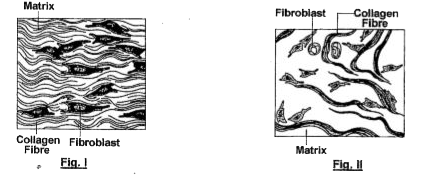
Identify i, ii and iii
i- uniport, ii -Antiport, iii- symport
i -uniport, ii-symport, iii- Antiport
i- Antiport, ii-symport, iii- uniport
i-symport, ii -uniport, iii -Antiport
The correct Answer is:D
Step by step video, text & image solution for Identify i, ii and iii by Biology experts to help you in doubts & scoring excellent marks in Class 12 exams.
Updated on:21/07/2023Similar Questions
Knowledge Check
Study the given steps of glycolysis and identify the enzymes (i),(ii) and (iii) responsible for carrying out these steps.
 A(i)(ii)(iii).Phosphohexose isomerasePhospho-fructokinase-Phospho-fructokinaseAldolaseB(i)(ii)(iii).HexokinasePhospho-fructokinaseAldolaseC(i)(ii)(iii).Phosphohexose isomeraseHexokinasePhosphofructo-kinaseD(i)(ii)(iii).AldolasePhospho-fructokinasePhosphohexose isomerase
A(i)(ii)(iii).Phosphohexose isomerasePhospho-fructokinase-Phospho-fructokinaseAldolaseB(i)(ii)(iii).HexokinasePhospho-fructokinaseAldolaseC(i)(ii)(iii).Phosphohexose isomeraseHexokinasePhosphofructo-kinaseD(i)(ii)(iii).AldolasePhospho-fructokinasePhosphohexose isomeraseIdentify the three components [(i),(ii) and (iii)] of ATP molecule shown in the give figure.
 A(i)(ii)(iii).RiboseTriphosphate groupAdenineB(i)(ii)(iii).AdenineTriphosphate groupRiboseC(i)(ii)(iii).GlucoseTriphosphate groupAdenineD(i)(ii)(iii).RiboseTriphosphate groupGuanine
A(i)(ii)(iii).RiboseTriphosphate groupAdenineB(i)(ii)(iii).AdenineTriphosphate groupRiboseC(i)(ii)(iii).GlucoseTriphosphate groupAdenineD(i)(ii)(iii).RiboseTriphosphate groupGuanineIdentify figure - I and II respectively-
 ADense regular connective tissue, dense irregular connective tissueBDense irregular connective tissue, dense regular connective tissueCAdipose tissue, specialised connective tissueDConnective tissue proper, specialized connective tissue
ADense regular connective tissue, dense irregular connective tissueBDense irregular connective tissue, dense regular connective tissueCAdipose tissue, specialised connective tissueDConnective tissue proper, specialized connective tissue
Identify the labelings i, ii , and iii in the hemoglobin-oxygen dissociation curve .

View Solution(a) Study the table given below and identify (i), (ii), (iii) and (iv)
Amino acidPheValDNA Code in GeneAAACACCodon in mRNA(i)(ii)Anticodon in tRNA(iii)(iv)
(b) A polypeptide consists of 14 different amino acids.
(i) How many base pairs must be there in the processed mRNA that codes for this polypeptide?
(ii) How many different types of tRNA are needed for the synthesis of this polypeptide ?
View Solution
(i) Identify A and B.
(ii) What is the role of B ? Give reasons why it is in C?
(iii) Explain the given system.
View Solution
(i) Identify the stage a and b
(ii) Name the structures c and d
(iii) In which stage implantation occurs
View SolutionIdentify I,II and II and select the correct option

View Solution








